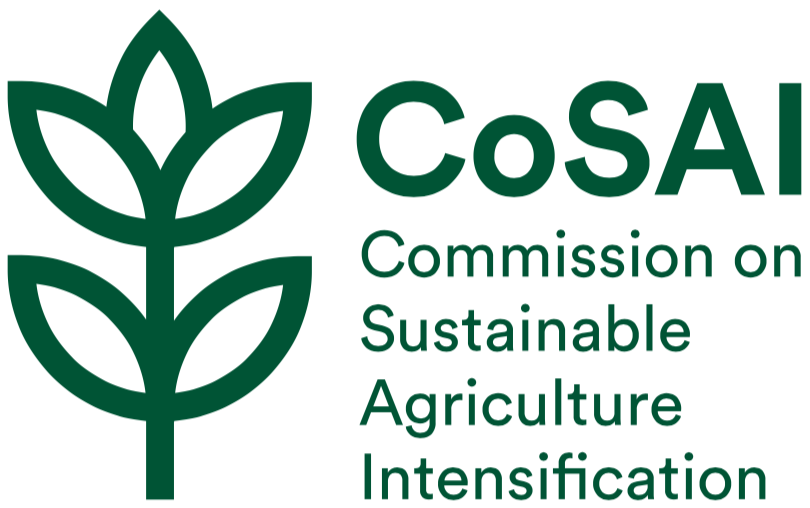How can economic incentives designed for environmental conservation support a transition to sustainable and equitable agriculture?
View results in:
https://www.iwmi.cgiar.org/archive/cosai/sites/default/files/CoSAI_PANS_Study/index.pdf

Licensing of resource:
Rights subject to owner's permission
Type:
report
Author(s):
Commission on Sustainable Agriculture Intensification (CoSAI)
Publisher(s):

Description:
Agriculture is crucial for the livelihood of millions of people worldwide and is one of the main drivers of deforestation, biodiversity loss and resource degradation. The contribution of agriculture to these environmental problems has been exacerbated by subsidies, which constitute the dominant public policy to support farmers. At the same time, other economic instruments introducing more sustainable land-use practices and incentivizing better environmental and social outcomes are already being applied worldwide. In this report, we selected a set of these incentive-based instruments for conservation and reviewed synthesis and meta-analysis studies that offered robust evaluations and comparisons of existing research. Please note that we use conservation as a shorthand for the protection and restoration of nature, and the mitigation of the effects of climate change on the environment. Based on thisreview, we identify their impacts on environmental, economic, and equity outcomes and discuss the success factors and challenges in their application and design.
Overall, we find some positive effects on deforestation reduction and the protection of surface water sources, with modest impacts on mitigation of climate change via emission reductions of greenhouse gases. Moreover, economic impacts on livelihoods and distributional effects are mixed and understudied in the literature, especially for the Global South. The evidence in the literature suggests that a crucial factor in the performance of economic instruments for conservation is a robust monitoring and sanction system based on conditional compensations. Their long-term success depends on the capacity to generate verifiable environmental benefits and the distributional impacts between winners and losers in conservation efforts.
Despite the potential of economic instruments for conservation to generate impact, significant tradeoffs remain between scalability versus efficiency, equity versus productivity and monitoring versus participation. Notably, the application of these instruments in sustainable agriculture requires tailoring their design to the local conditions of farmers, making forest conservation compatible with rural livelihoods, and balancing punishments and rewards.
Resultsfrom thisreview call forinnovationsto make these instruments usefulto support the transition to sustainable agriculture. Opportunities for innovation include (i) lower access cost to smallholders, (ii) allowing mixed uses, with an emphasis on restoration, (iii) enhancing community participation in monitoring and (iv) work on spatial targeting of the most critical ecosystems with a landscape or jurisdictional approach.
Publication year:
2021
Keywords:
Economic incentives
sustainable agriculture
transition paths
Related Resources
Extensionismo y gestión territorial para el desarrollo rural
El Instituto Interamericano de Cooperación para la Agricultura (IICA) tiene como misión proveer esquemas de cooperación técnica a sus estados miembros en el continente americano. El documento que aquí se presenta sintetiza los resultados de la segunda fase del trabajo...
Publication year:
2012- Link to web resource
Sistemas territoriales de abastecimiento alimentario: Propuesta metodológica
Con el espíritu de contribuir a este enfoque se presenta esta guía metodológica sobre “Sistemas Territoriales de Abastecimiento Alimentario” orientada a técnicos, académicos y tomadores de decisiones tanto de gobiernos locales, regionales o nacionales como de la iniciativa privada. Su...
Publication year:
2018- Link to web resource
Tiempos de cosecha 2016 : síntesis informe anual
Rendir un informe anual del trabajo realizado por el IICA es más que un compromiso con la transparencia y la rendición de cuentas; constituye también un medio para reconocer los avances de nuestros Estados Miembros en beneficio de sus pueblos....
Publication year:
2017- Link to web resource
Harvest times 2016 summary report
Presenting an annual report of the work carried out by IICA is more than a commitment to transparency and accountability; it is also a way of acknowledging the progress made by our Member States on behalf of their peoples. What...
Publication year:
2017- Link to web resource
Quelles politiques publiques pour promouvoir l’adaptation des agricultures familiales aux changements climatiques : rapport de la C2A
Le rapport est construit en trois parties : • la première partie traite de l’adaptation des agricultures familiales aux changements climatiques et des conditions de l’adaptation ; • la seconde partie aborde la place de l’adaptation des agricultures familiales dans...
Publication year:
2017- Link to web resource
